Introduction
Compression socks are more than just a trend—they’re a go-to solution for improving circulation, reducing swelling, and speeding up recovery. But what about wearing them overnight? While many swear by the benefits of sleeping with compression socks on, others remain cautious.
Generally, you should not wear compression socks overnight. They are designed to counteract gravity while you’re upright. When lying flat, the pressure is unnecessary and can potentially restrict proper circulation. Only wear them to bed if you have been specifically instructed to do so by your doctor for a medical condition.
For brands and retailers, understanding the truth behind nighttime use is key to meeting customer demands and offering the right products. In this article, we’ll dive into whether it’s safe to sleep in compression socks, the benefits for various customer groups, and when caution is needed. This is your guide to ensuring your offerings align with customer needs, while also staying ahead in the competitive market.
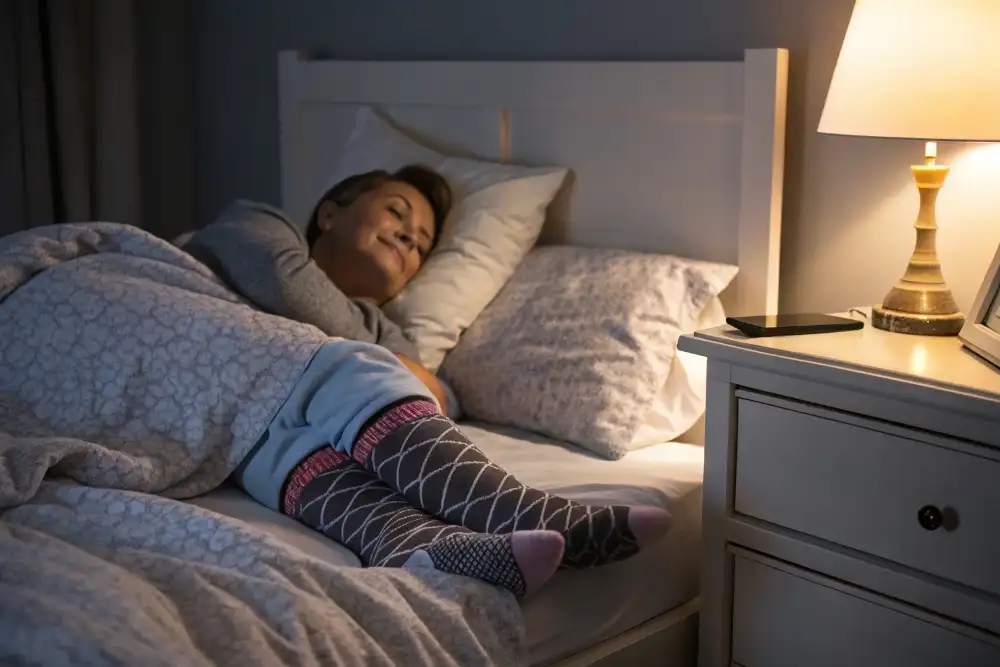
Compression Socks 101: What Every Brand Needs to Know
What Are Compression Socks (And Why Do They Matter)?
Compression socks are special socks that apply gentle pressure to the legs, helping improve circulation. This pressure reduces swelling, prevents discomfort, and supports recovery. These socks are used by people in various situations, from athletes to those with medical conditions, making them a versatile product for your customers.
How Compression Socks Work: Pressure Levels Explained
Compression socks come in different pressure levels, measured in mmHg (millimeters of mercury). The pressure is strongest at the ankle and decreases as it moves up the leg. Low compression is great for everyday comfort, while higher levels are used for more serious conditions or recovery. Understanding these pressure levels helps you offer the right products to meet your customers’ needs.
Can You Safely Sleep in Compression Socks? Breaking the Myth
The Short Answer: Yes or No?
The short answer is: It depends. Sleeping in compression socks is generally safe for most people, especially if it’s done with the right level of pressure. However, there are certain conditions where it may not be recommended, or it may cause discomfort. The key is ensuring they are the right fit and the pressure level is appropriate for overnight use.
Effects on Blood Circulation During Sleep
When you sleep, your body is in a more relaxed state, and gravity’s effect on blood circulation is reduced. This makes it easier for blood to flow naturally without the need for extra compression. However, wearing compression socks at night can still benefit people with certain conditions, as they continue to promote blood return to the heart, especially in those who suffer from poor circulation or swelling.
How Compression Socks Support Leg Recovery at Night
Overnight wear can be especially helpful for individuals recovering from exercise or surgery. During sleep, the body is already focused on healing, and compression socks can enhance that process by improving circulation, reducing swelling, and speeding up muscle recovery. This makes them a useful tool for athletes and anyone in need of extra leg support while they rest.
Top Benefits of Wearing Compression Socks While Sleeping
Improved Circulation During Sleep: A Retailer’s Selling Point
Wearing compression socks while sleeping can significantly boost blood circulation, which is crucial for individuals dealing with poor circulation or leg swelling. This constant pressure helps blood flow more effectively, reducing the risk of blood clots and supporting faster recovery. For retailers, emphasizing these benefits can attract customers looking for relief from leg discomfort and a more restful sleep.
Unexpected Use Cases for Nighttime Compression Socks
Compression socks offer surprising advantages for several groups, making them a versatile product for your customers. Here are some of the key use cases for wearing them while sleeping:
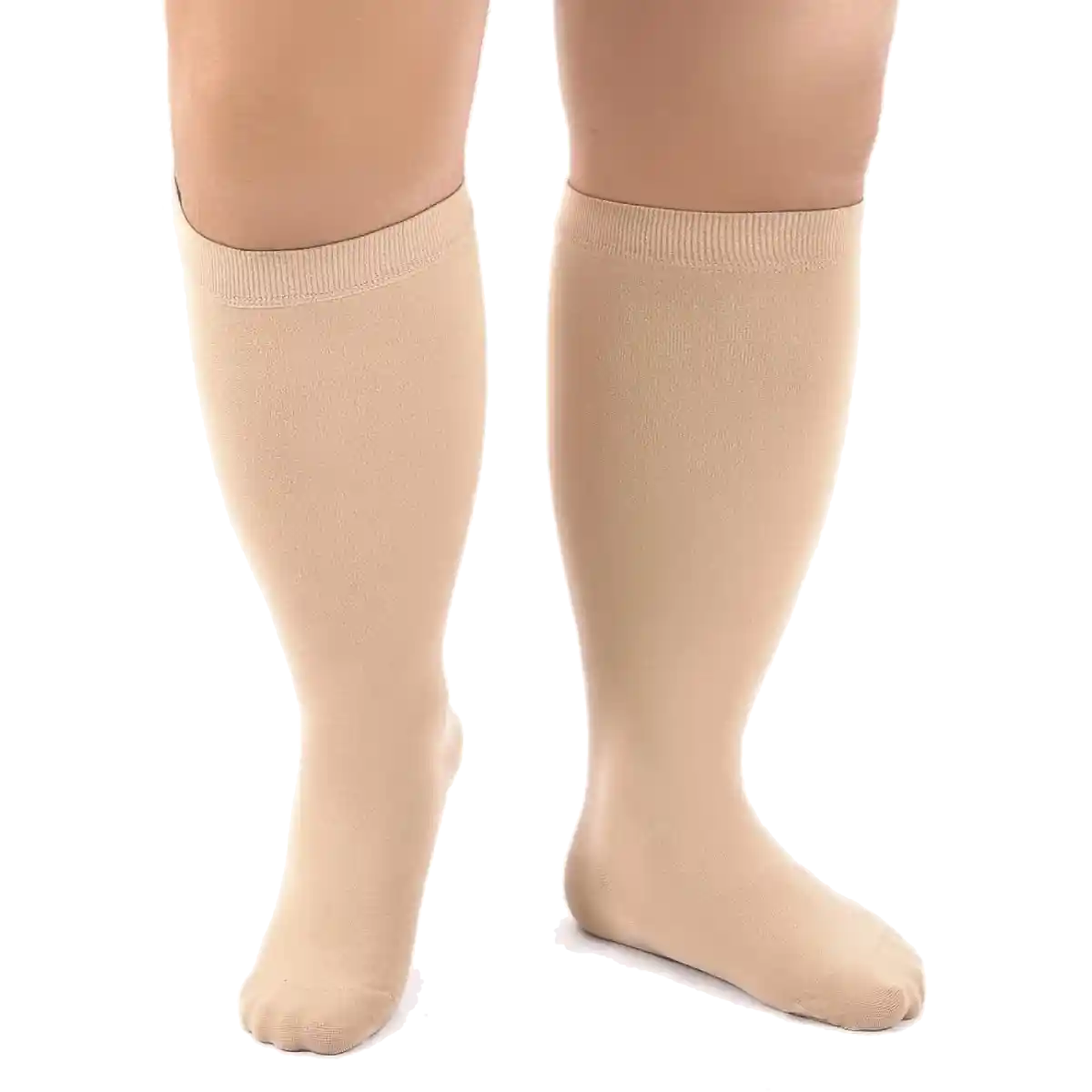
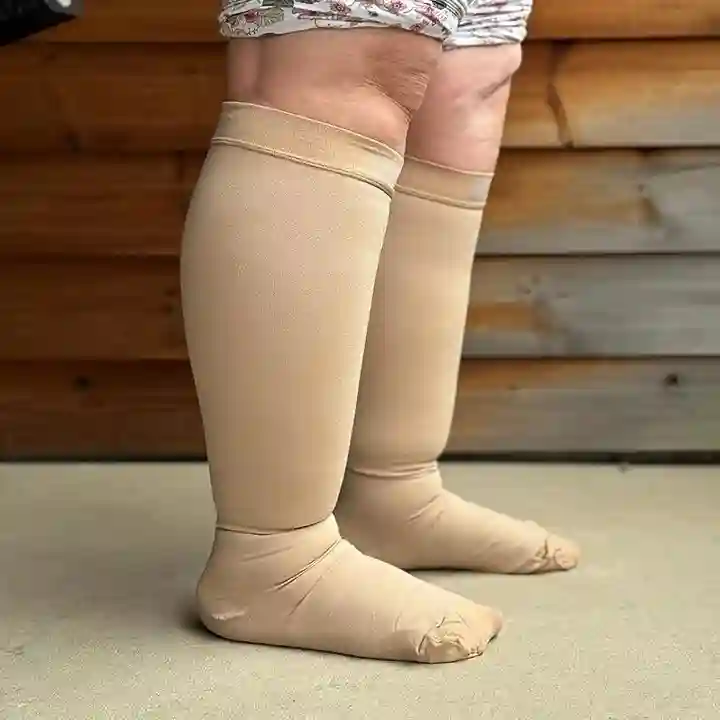
Benefits for Special Groups:
Reducing Swelling for Lymphedema and Postoperative Patients
Lymphedema and postoperative swelling both lead to fluid buildup in the legs, which can cause discomfort and delay recovery. Compression socks help manage this swelling by promoting better fluid drainage and improving circulation. This is especially beneficial for individuals recovering from surgery or those with lymphedema, as it speeds up recovery and enhances comfort during rest.
Supporting Recovery from Venous Insufficiency
For individuals with severe venous insufficiency, compression socks help reduce symptoms like pain and swelling. They work by improving blood flow and easing the strain on weakened veins, which can prevent complications and improve overall leg health, particularly when worn overnight.
Preventing Dizziness for People with Postural Hypotension
People with postural hypotension (low blood pressure upon standing) often experience dizziness or fainting. Wearing compression socks while sleeping can help maintain proper circulation, ensuring that blood is returned to the heart efficiently and reducing the risk of dizziness when standing up.
Enhancing Muscle Recovery for Athletes
Compression socks can also benefit athletes by aiding in muscle recovery overnight. The socks help enhance circulation, which accelerates the removal of lactic acid from muscles, reducing soreness and allowing athletes to recover faster and perform better in subsequent workouts.
Preventing Morning Dizziness in Elderly Populations
As people age, circulation issues can cause dizziness upon waking or standing up. Compression socks help elderly individuals maintain stable circulation during sleep, minimizing the risk of dizziness or lightheadedness in the morning and allowing for a safer, more comfortable start to their day.
These use cases show just how diverse the benefits of compression socks can be. For retailers, this broad range of applications makes them an essential product to offer a variety of customers.
Risks of Sleeping in Compression Socks: When to Advise Caution
While wearing compression socks overnight can provide benefits, it’s important to understand the potential risks. For some individuals, extended use can lead to issues that may outweigh the advantages. It’s essential to be aware of these hidden dangers so you can guide your customers effectively.
Skin Irritation & Pressure Sores
One of the common issues that can arise from wearing compression socks while sleeping is skin irritation. Prolonged use, especially with socks that are too tight, can cause rashes, itching, or even pressure sores. This happens because the socks can trap sweat and moisture, which irritates the skin. Retailers should recommend breathable materials and encourage customers to monitor for signs of discomfort, ensuring they choose socks designed to minimize skin issues.
Circulation Risks for Diabetic Customers
For diabetic customers, circulation problems are a serious concern. While compression socks can improve blood flow for many, they can also pose risks for those with diabetes. Wearing socks that are too tight can worsen circulation problems or cause discomfort, especially if there are already issues like peripheral artery disease. It’s important to recommend lower compression levels for diabetic customers and suggest they consult with a healthcare provider before wearing compression socks overnight.
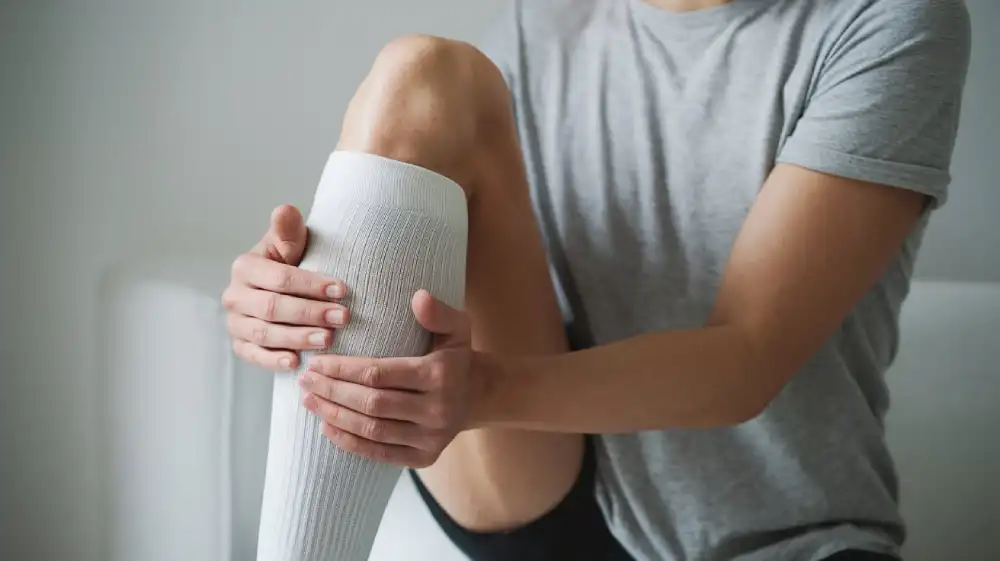
How Improper Fit Can Backfire
The fit of compression socks is crucial, particularly when worn overnight. Socks that are too tight can restrict blood flow and lead to serious complications, while socks that are too loose may not provide the intended benefits. Improperly fitted socks can cause discomfort, swelling, or even exacerbate existing circulation issues. When recommending compression socks, always ensure they are the right size and pressure level for each individual, so they get the maximum benefit without the risks.
Who Should Use Compression Socks?
Compression socks are versatile and can benefit many different individuals. Offering them to a wide range of customers allows you to meet various health and wellness needs. Here are some of the key groups who can benefit from these socks:
Patients with Chronic Venous Insufficiency
For those with chronic venous insufficiency, where blood struggles to flow properly through the veins, compression socks can provide much-needed support. They help manage swelling, alleviate pain, and assist in blood flow, providing ongoing relief.
People Who Stand or Sit for Long Hours (e.g., Medical Staff, Office Workers)
Individuals who spend long periods standing or sitting often deal with tired, swollen legs. Compression socks can improve circulation and reduce discomfort for these individuals, allowing them to maintain comfort and energy throughout their day.
Long-Distance Travelers
Traveling for extended periods, especially on planes, can lead to leg swelling and circulation problems. Compression socks are a practical solution for reducing swelling and improving circulation, helping travelers feel more comfortable and reducing their risk of clot formation during long trips.
Athletes
Athletes often use compression socks as a recovery tool. The increased circulation helps to flush out waste products like lactic acid, speeding up recovery times after intense physical activity. Many athletes wear them during rest periods, including overnight, to boost muscle recovery.
Pregnant Women
Pregnancy can put additional strain on the legs, leading to swelling and discomfort. Compression socks help ease these symptoms by encouraging better blood flow, providing relief and comfort to expectant mothers, particularly in the later stages of pregnancy.
How to Choose the Best Compression Socks for Overnight Use
Material Matters: Breathable Fabrics vs. Medical-Grade Needs
When selecting compression socks for overnight use, the material is crucial for both comfort and effectiveness. Breathable fabrics are essential for overnight wear to prevent overheating and moisture buildup, which can lead to skin irritation. Look for socks made with cotton, nylon, or specialized functional fibers designed to keep the skin dry. However, for more medical-grade applications, such as for patients recovering from surgery or dealing with severe swelling, medical-grade compression socks made from durable, high-quality materials are necessary to ensure proper support while maintaining comfort.
Compression Levels Made Simple: What Retailers Should Stock
When it comes to compression socks for sleep, not all pressure levels are created equal. For most customers, a lower compression level (8-15 mmHg) is ideal for overnight use. This range provides gentle support without being too restrictive, ensuring comfort while promoting healthy circulation. Retailers should consider stocking a variety of compression levels, but focus on the lower end for nighttime wear to meet the needs of a wider audience, including those seeking relief from mild swelling or fatigue.
Low Pressure (8-15 mmHg) for Sleep Comfort
For overnight wear, low compression socks (8-15 mmHg) are generally the best choice. This level of pressure is sufficient to encourage blood flow without causing discomfort or restricting circulation. It’s particularly ideal for people who suffer from mild swelling or fatigue and need gentle support while they sleep. Retailers should highlight this compression range as the go-to option for customers looking for comfort and relief during rest.
Custom Sizing for Diverse Body Types
When recommending compression socks, fit is just as important as compression level. One-size-fits-all socks may not work for everyone, as body types vary significantly. Offering custom sizing options ensures that each customer gets the right fit, enhancing the effectiveness of the socks. Proper sizing is especially important for overnight use to avoid excessive pressure or loose fits that might not provide the desired results. Retailers should focus on providing accurate sizing guides and options to accommodate a wide range of body types.
Custom Compression Sock Solutions: Partnering with the Right Factory
Why Medical-Grade Customization Matters
Your customers aren’t one-size-fits-all—so their legwear shouldn’t be either. Medical-grade tailoring ensures products match specific health needs, like 20-30 mmHg pressure for post-surgery recovery or breathable blends for sensitive skin. Brands that prioritize this level of customization avoid returns, build trust, and tap into premium markets like physical therapy or senior care.
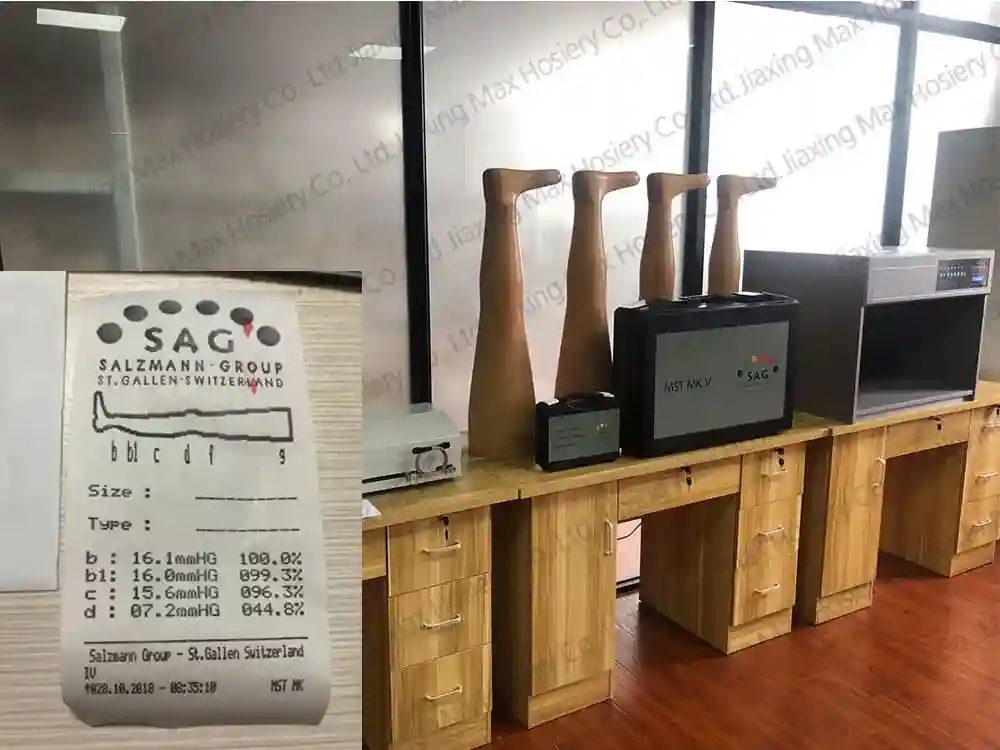
Tailoring Pressure Levels to Match Customer Needs
A traveler’s 15-20 mmHg requirement differs vastly from an athlete’s recovery needs. For example, mild compression (8-15 mmHg) suits overnight wear, while higher levels address chronic swelling. Clear labeling helps retailers guide buyers confidently.
Safe, Skin-Friendly Fabrics for Sensitive Users
Comfort starts with materials. Brands should prioritize OEKO-TEX® certified fabrics to avoid skin irritation—critical for diabetes care or allergy-prone buyers. Bamboo fibers or merino wool add breathability and antimicrobial properties, reducing nighttime discomfort. Factories offering these options let you cater to niche audiences without compromising safety.
How We Deliver Compliant, Comfortable Products
Precision sizing minimizes complaints. Our clinical research-backed guides ensure designs adapt to diverse body shapes, while batch testing guarantees pressure accuracy. Certifications like ISO 13485 validate medical-grade quality, assuring your buyers they’re investing in reliable solutions.
Conclusion: Should Your Brand Offer Nighttime Compression Socks?
Compression socks provide numerous benefits, from improving circulation to helping with muscle recovery and managing medical conditions. Offering these socks to your customers can meet a wide range of needs, whether for athletes, post-surgery recovery, or everyday comfort.
By partnering with the right factory, you can ensure high-quality, custom compression socks that fit your customers’ needs perfectly. With the right compression levels, skin-friendly fabrics, and accurate sizing, your products will provide maximum comfort and effectiveness.
Interested in offering the best compression socks to your customers? Get in touch with us today to learn how we can help you create the perfect custom socks for your brand. Let’s work together to bring your business and products to the next level.
FAQs
Can Compression Sock Tightness Affect Sleep Quality?
Yes, if compression socks are too tight, they can cause discomfort and disrupt sleep. It’s important to ensure the socks have the right fit—neither too tight nor too loose—to avoid affecting sleep quality.
Can compression socks be used for all customers, or are there exceptions?
Compression socks are suitable for most customers, including athletes and those with circulation issues. However, people with severe circulatory problems should consult a doctor before using them overnight.
Do compression socks have to be worn all night to be effective?
Not necessarily. Wearing them for several hours during sleep can still provide benefits, but longer wear may be more effective for managing swelling and circulation issues.
Can you replicate a competitor’s best-selling compression sock with improvements?
Absolutely. We analyze competitor products to enhance features (e.g., reinforced heels, wider calf sizes) while adhering to IP laws.
What’s the minimum order quantity for custom packaging with branding?
MOQ starts at 800 pairs, with options to include multilingual care guides or QR codes linking to your brand’s educational content.
